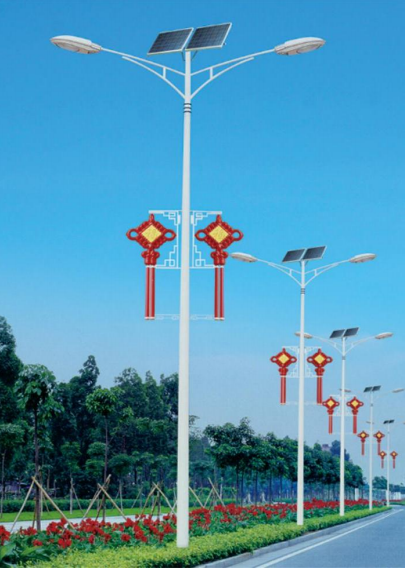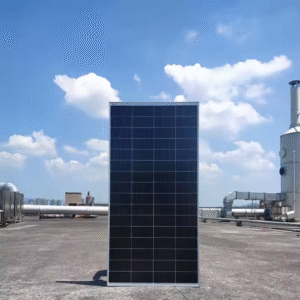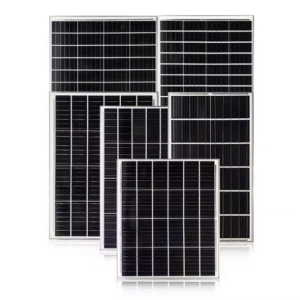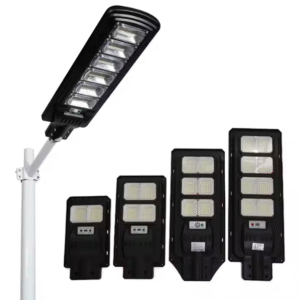What are the two types of solar street lights?
by
What are the two types of solar street lights?
As cities worldwide push for greener solutions, solar street lights have emerged as a bright alternative - but not all shine the same way.
There are two primary types of solar street lights: all-in-one integrated systems and split-type (separated component) systems. All-in-one units combine solar panels, batteries and LED lights in a single compact unit, while split-type systems have these components separated for flexibility in installation and maintenance.
While both types ultimately serve the same purpose, their different configurations create distinct advantages depending on your lighting needs. Let's illuminate the key factors that set them apart.
How do I choose the best solar street light?
Staring at dozens of solar lighting options can feel overwhelming - but finding your perfect match comes down to asking the right questions.
Select the best solar street light by considering: 1) Your location's sunlight availability, 2) Required brightness (lumens) and coverage area, 3) Needed autonomy (backup days), 4) Local weather conditions, and 5) Budget constraints between initial cost and long-term savings.
The 5 Critical Selection Factors
-
Sunlight Availability
- Track your site's average daily sunlight hours
- Cloudy regions need larger solar panels/batteries
- Example: Seattle installations require 30% more capacity than Phoenix
-
Lighting Requirements
- Residential areas: 3000-6000 lumens
- Roadways: 6000-12,000 lumens
- Large parking lots: 12,000+ lumens
-
Backup Days Needed Backup Requirement Battery Size Adjustment 1-2 days Standard capacity 3-5 days +30-50% battery Week-long +100% battery or hybrid -
Weather Resistance
- High IP65+ rating for rainy climates
- Rust-proof materials for coastal areas
- Enhanced pole strength for wind zones
-
Budget Balance
- All-in-one: Lower install cost
- Split-type: Lower maintenance cost
- LED quality affects long-term savings
Having helped several municipalities with their solar transitions, I've found that spending 15% more on weather-resistant models typically pays off in reduced maintenance costs within 3 years.
How do you size a solar street light?
Solar lighting systems that are too small leave streets in darkness, while oversized units needlessly drain budgets - finding that Goldilocks zone is key.
Size solar street lights by: 1) Calculating daily energy needs (watt-hours), 2) Determining solar panel wattage based on location's peak sun hours, and 3) Selecting battery capacity for 3-5 days autonomy. A typical 60W LED light requires a 100W solar panel and 100Ah battery in most temperate climates.
Step-by-Step Sizing Process
-
Energy Demand Calculation
- LED wattage × hours of nightly operation
- Example: 60W × 10 hours = 600Wh daily need
-
Solar Panel Sizing
- Divide daily need by local peak sun hours
- 600Wh ÷ 5 sun hours = 120W panel minimum
- Add 30% buffer: 156W → Round to 160W
-
Battery Capacity
- Daily need × desired backup days
- 600Wh × 3 days = 1800Wh
- Convert to Ah: 1800Wh ÷ 12V = 150Ah battery
These calculations explain why the same light might need a 200W panel in Toronto but only 120W in Los Angeles. I keep a cheat sheet of regional multipliers that's saved countless planning hours.
How many hours does a solar street light last?
That glowing promise of "maintenance-free for years" sounds great - but what's the real lifespan when installed in your specific environment?
Quality solar street lights typically operate 8-12 hours nightly and last 5-8 years before needing major component replacements. High-end systems with lithium batteries and premium LEDs can exceed 10 years with proper maintenance, while cheaper models may require repairs in 2-3 years.
Lifespan by Component
| Component | Average Lifespan | Premium Option Lifespan |
|---|---|---|
| LED Fixture | 50,000 hours | 100,000+ hours |
| Lithium Battery | 5-7 years | 8-10 years |
| Solar Panel | 20-25 years | 30+ years |
| Controller | 5-8 years | 10+ years |
The municipal project I consulted on in Arizona saw some batteries fail in just 18 months due to extreme heat - a painful lesson about choosing components rated for local conditions. Proper ventilation and heat-resistant batteries added 4+ years to subsequent installations.
Conclusion
Solar street lights come in integrated and split-type configurations, with optimal selection depending on lighting needs, sun exposure, weather conditions, and budget - offering 5-10+ years of sustainable illumination when properly sized and specified.




